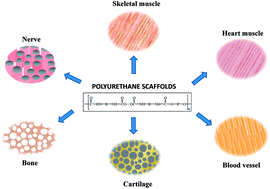Biomimetic polyurethanes in nano and regenerative medicine
Abstract
Nature's inspiration is a promising tool to design new biomaterials especially for frontier technological areas such as tissue engineering and nanomedicine. Polyurethanes (PURs) are a flexible platform of materials that can be designed to fit the requirements imposed by their final applications. The choice of their building blocks (which are used in the synthesis as macrodiols, diisocyanates, and chain extenders) can be implemented to obtain biomimetic constructs, which can mimic the native tissue in terms of mechanical, morphological and surface properties. In bone tissue engineering, elastomeric PURs avoid shear forces at the interface between bone and the implant, supporting the proliferation of osteogenic cells. Soft tissues can be engineered equally efficiently by PURs, which have been reported to be reliable candidates in the fabrication of muscle constructs (including heart, blood vessels, cartilage and peripheral nerve regeneration). This review summarizes the recent progress in the biomedical applications of polyurethanes. After introducing the concept of biomimetics (paragraph 2), the use of PURs in the engineering of hard tissues (para. 3.1), soft tissues (para. 3.2) and in nanomedicine (para. 4) is reported. Taken collectively, reports in the literature clearly indicate the potential of PURs to complement or substitute alternative, FDA approved, degradable polymers, such as those belonging to the polyester family, in the replacement of damaged tissues or organs, as well as in the emerging field of nanomedicine, where they might show superior drug encapsulation efficiency and enhanced capability to target specific tissue compartments.


 Please wait while we load your content...
Please wait while we load your content...